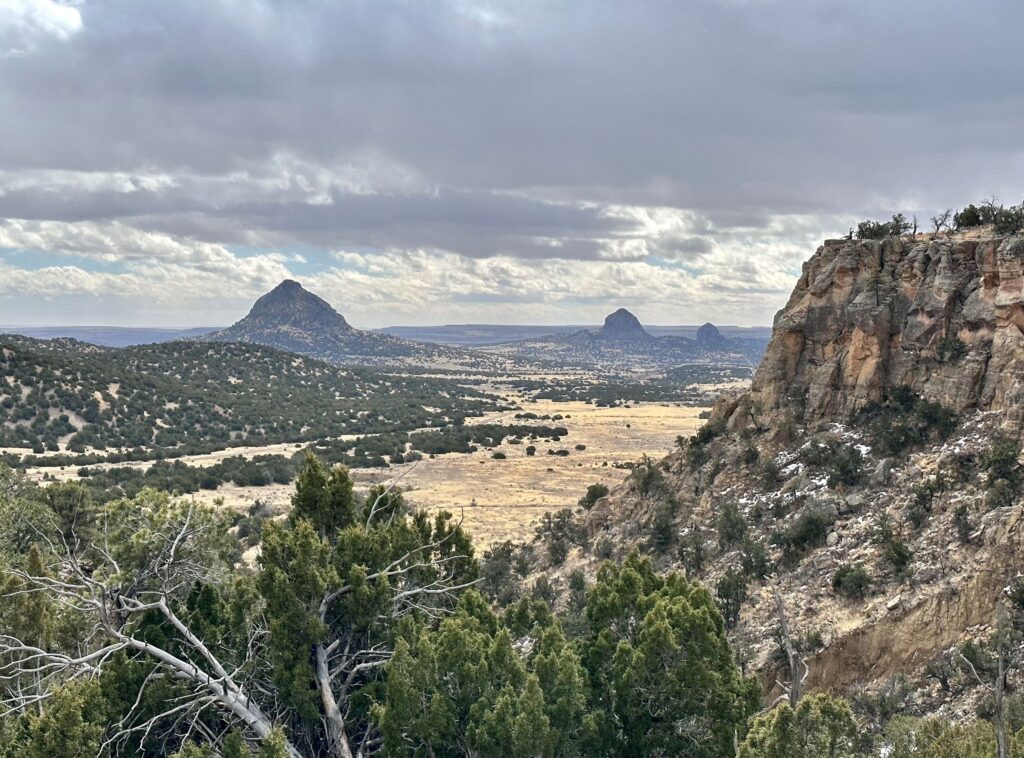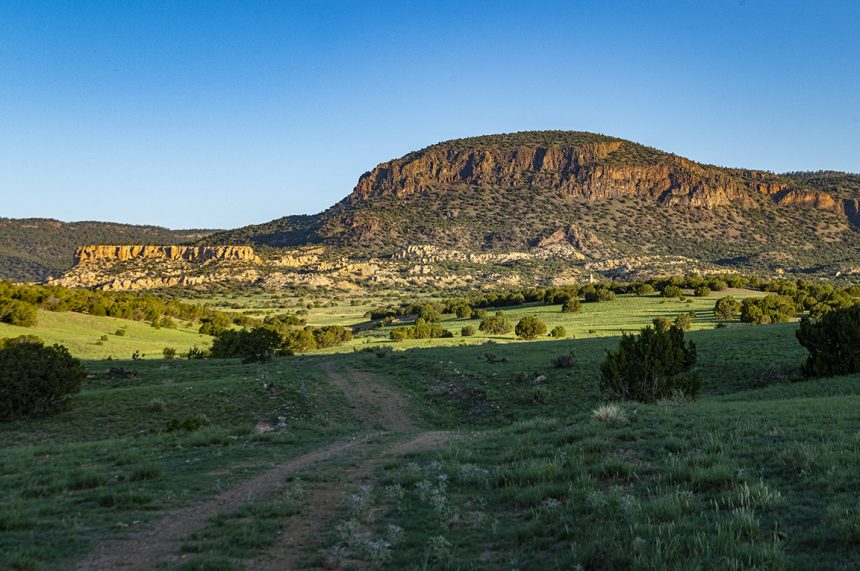This article was originally posted in The Archery Wire on March 14, 2023.
By Craig Springer, USFWS
A 700-year-old petroglyph portends the future of a new wildlife management area.
If you need a reminder that the world is held together by stone and story, then consider the Marquez Wildlife Management Area and its recent addition, the L-Bar Ranch, with its rocks and rills and temple hills near Laguna, New Mexico.

The New Mexico Department of Game and Fish acquired the L-Bar Ranch in late 2022, through the Pittman-Robertson Act, excise taxes paid by firearms, ammunition, and archery manufacturers. The new property expanded the existing Marquez WMA to 68,000 acres—106 square miles—of public land soon to be open to hunters and birders and nature enthusiasts.
This newly expanded Marquez WMA is a varied land, rising from open savanna to its upper reaches at 9,000 feet above sea level, with vertical yellowish Jurassic cliffs at the edges of intriguing mesas. Natural depressions pock the grasslands, catching summer monsoons where migrating waterfowl tarry in the fall. Its hillocks studded with live oak, juniper, and manzanita and may hold Mearns, Gambels, and scaled quail. Higher up, mixed confiner—spruce and fir and ponderosa pine stands—broken only by alpine meadows harbor elk, mule deer, black bear, dusky grouse, and Merriam’s turkey.
Plans are underway to release pronghorn antelope in the coming weeks on the lower-elevation grasslands now rested from domestic sheep and cattle grazing perhaps for the first time since the 1590s. The pronghorn will be trapped, examined by a veterinarian, and transplanted from northeast New Mexico in labor-intensive work also funded via Pittman-Robertson.
Aside from its massive size, acquisition of the L-Bar Ranch brings an added value: it connects large swaths of existing public lands managed by the Bureau of Land Management to the north and the U.S. Forest Service to the southwest. This is especially important in science-based wildlife management by providing migration corridors for elk and mule deer, where the herds can better fulfill their habitat needs throughout the seasons. Properly managed, the lands in their totality will provide calving and nursery areas, summer range and wintering habitats for deer and elk. A former alfalfa field fed by pivot irrigation on the L-Bar will now push up winter wheat for wildlife. A litany of songbirds visit the area on their north-south seasonal routes as stop-overs; others stay and nest and raise their broods adding their sweet audible incense to the summer air.

Vistas on Marquez WMA are long, grand, and arrested only by the curve of the earth. The stone features possess a story all their own.
The camel-colored cliffs are layered like a tall cake, marking flooding and receding seas from deep time. The Jurassic strata are littered with seashells. Mt. Taylor looming large to the west on Cibola National Forest land is a dormant volcano, snow-tipped most months of the year. It’s a sacred site to Native Americans. Plugs from several smaller extinct volcanoes vault from the valley floor on the Marquez WMA, and all of them have a name and spirit to the Native and local people who live nearby.
Art from the earliest inhabitants of the area grace flat stone walls and angular boulders revealing observations of the world experienced in the past, piercing the marrow of our current understanding: etched in stone, a human figure draws a bow on a standing elk.
After 400 years of sheep and cattle grazing, the new addition to the Marquez WMA is expected to yield more public opportunity to interact with wildlife and the land much like a Native American recorded in a petroglyph perhaps seven centuries years ago.
To learn more how Pittman-Robertson is used for conservation, visit Partner with a Payer.

